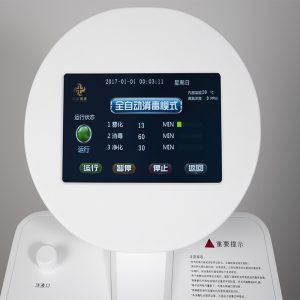Internal Cycle Disinfection of Anesthesia Machine

We know that we only thrive if we can guarantee our combined price competiveness and quality advantageous at the same time for Internal cycle disinfection of anesthesia machine.
Introduction:
In healthcare settings, the safety of patients is of utmost importance. Anesthesia machines play a vital role in delivering anesthesia to patients during surgical procedures. To ensure patient safety and prevent the transmission of infections, it is crucial to regularly disinfect and maintain anesthesia machines. This article focuses on the internal cycle disinfection process of anesthesia machines and provides essential information about its significance and best practices.
The Significance of Internal Cycle Disinfection:
Internal cycle disinfection involves the thorough cleaning and disinfection of the internal components of an anesthesia machine. Although external surface disinfection is essential, internal cycle disinfection is equally crucial as it helps prevent the accumulation of pathogens, blood, secretions, and debris within the machine. Regular disinfection minimizes the risk of cross-contamination between patients, reduces the transmission of healthcare-associated infections, and maintains the quality and performance of the machine.
Process and Equipment Used:
The internal cycle disinfection process typically involves the following steps:
1. Disconnect the machine: Ensure the machine is disconnected from the power supply and all gas sources before initiating the disinfection process.
2. Pre-cleaning: Remove any visible soil or debris from the machine components using a clean cloth or sponge. Pay attention to areas where fluids or secretions might accumulate, such as tubing, valves, and connectors.
With superb service and quality, and an enterprise of foreign trade featuring validity and competitiveness, that will be trusted and welcomed by its clients and creates happiness to its employees.
3. Disinfectant selection: Choose an appropriate disinfectant solution recommended by the machine manufacturer or healthcare facility. Ensure it is compatible with the materials used in the machine to prevent damage.
4. Disinfection procedure: Follow the manufacturer's guidelines for the machine's internal disinfection. This may involve manually wiping the surfaces with the disinfectant solution or employing automated disinfection devices specifically designed for anesthesia machines.
5. Drying: After disinfection, allow the machine to dry completely before reconnecting it to power sources and gas supplies.
Best Practices for Effective Disinfection:
To ensure the effectiveness of internal cycle disinfection, healthcare professionals should adhere to the following guidelines:
1. Refer to manufacturer recommendations: Understand and follow the manufacturer's guidelines regarding the disinfection process and its frequency. This ensures that the machine is disinfected correctly without causing damage.
2. Regular maintenance: Conduct regular inspections and maintenance of the anesthesia machine to identify any damaged or worn-out parts that may hinder the disinfection process.
3. Training and education: Healthcare professionals responsible for disinfecting anesthesia machines should receive proper training and education about disinfection protocols, including the correct use of disinfectants and equipment.
4. Documentation: Maintain a comprehensive record of all disinfection procedures, including the date, time, and personnel responsible for disinfecting the machine. This record establishes accountability and enables tracking of the disinfection process.
Conclusion:
Internal cycle disinfection of anesthesia machines is an essential practice in healthcare settings to maintain patient safety and prevent the spread of infections. By following proper guidelines, regularly disinfecting the internal components of anesthesia machines, and ensuring regular maintenance, healthcare professionals can minimize the risk of cross-contamination and promote better patient outcomes.
We will initiate the second phase of our development strategy. Our company regards "reasonable prices, efficient production time and good after-sales service" as our tenet. If you are interested in any of our products or would like to discuss a custom order, please feel free to contact us. We are looking forward to forming successful business relationships with new clients around the world in the near future.